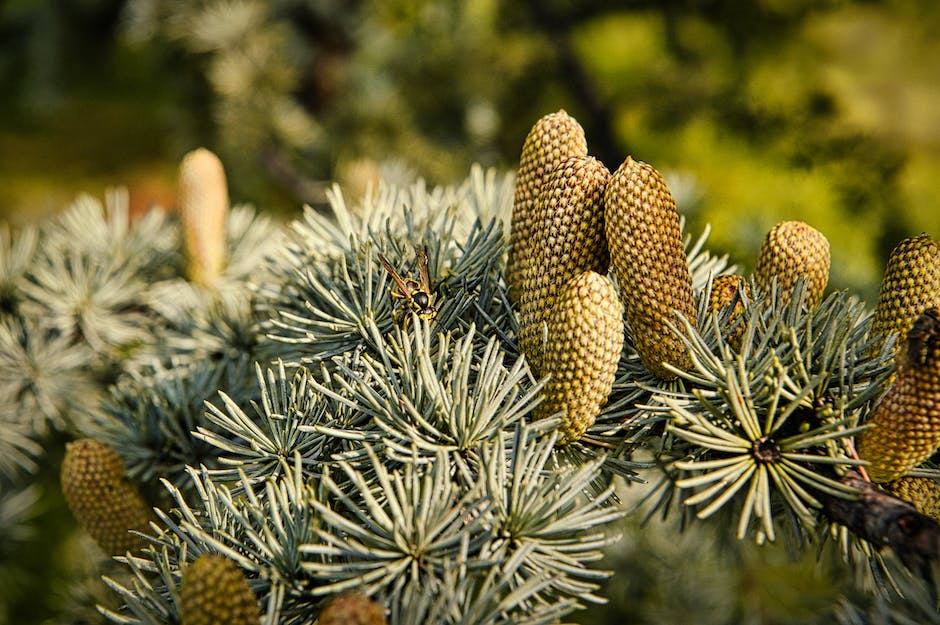A tree’s cones are its fruit, and just like any other plant, a tree is vulnerable to stress. Various environmental conditions, such as drought, can cause a tree to produce fewer cones, or even no cones at all. While a tree may be able to withstand occasional episodes of stress, if the conditions are prolonged, the tree may die.
This is a difficult question to answer definitively as there are a variety of factors that can affect why a particular tree produces more or fewer pine cones. In some cases, it may be an indicator that the tree is stressed, but it could also simply be a natural variation in cone production from year to year. If you’re concerned that your tree may be under stress, it’s best to consult with a certified arborist or tree care specialist.
How can you tell if a pine tree is stressed?
White pine decline is a result of stress, especially for trees planted outside the species’ requirements. Early symptoms of decline include yellowish-green or browning needles that drop prematurely and thin out the tree’s canopy. Bark on the branches appears shriveled or wrinkled.
Pinecones are the seeds of pine trees, and are a favorite food of many insects. When a pine tree produces a heavy crop of pinecones, it is thought to be a defense mechanism to prevent insect infestations. Insects are attracted to the seeds dropped by trees, and will “camp out” beside a dubious source of sustenance. If a tree produces a large number of pinecones, it is likely that the insects will not be able to eat all of the seeds, and the tree will be safe from infestation.
Do pine trees produce more cones when stressed
Pine cones are more abundant on conifers this season due to climate stresses. This is a defense mechanism to produce more seeds to ensure the survival of the species.
Removing young seed cones is generally not a problem and may actually help the tree with growth. Some Christmas tree farms use this method to decrease the energy used for seed production and redirect it into branch and tree development. Just be careful not to damage any branches when removing the cones.
What does a stressed tree look like?
There are a number of reasons why a tree may be under stress, including less growth, off-color or smaller than normal foliage, early leaf drop, cracked bark and dying branches. If you notice any of these symptoms, it’s important to take action to help the tree recover. This may include watering, fertilizing, pruning or other steps.
If you notice any of these symptoms in your tree, it is likely that it is under stress. Distorted or missing growth can be caused by a number of factors, including poor nutrition, pests, or disease. Substances or spots on foliage can also be a sign of stress, as can lack of vigor. If you notice any of these symptoms, it is important to take action to help your tree recover.
Do pine cones tell the weather?
Pine cones are very sensitive to the weather and can give us clues about whether it is going to rain or not. If the pine cones are full of seeds, it means that they have opened on dry, fine days and the wind has had a chance to carry the seeds away from the parent tree. If the humidity is higher, the seeds are less likely to be carried away and the pine cones will remain closed.
If you see any brown spots on pine needles from different parts of the tree, it may mean that the tree has a disease. Be sure to check for brown stripes or brown clumps in the center of the needles, as this could be a sign of a serious problem. If you notice anything abnormal, contact a tree expert or arborist for further diagnosis and treatment.
What does a lot of pine cones mean for winter
There is no scientific evidence to support the claim that the number of pine cones in the fall can predict the severity of winter weather. However, some people believe that if there are a lot of pine cones, it means that the trees are preparing for a long, cold winter.
Pine trees produce more cones when a harsh winter is on the way in order to stock up on food for animals like squirrels and birds. This is because these animals are more likely to forage for pine seeds when there is snow on the ground and tougher conditions overall. By producing more cones, the pine trees are helping to ensure that these animals have enough to eat during the winter.
How do you treat a stressed pine tree?
This helps reinvigorate the tree. Avoid cutting the limb flush with the trunk so the wound can heal properly.
Pine cones have an interesting adaptation that helps them to disperse their seeds more effectively – when it rains, their scales fold inwards to prevent the seeds from falling out simply from the weight of the water droplets. This allows the seeds to be carried further away from the parent plant, increasing the chances that they will take root and survive.
How long do pine cones stay on a tree
Pine cones are the reproductive structures of pine trees, and they can stay on the tree for more than 10 years before they drop to the ground. All conifers produce male and female cones, but sometimes the cones are on the same tree and sometimes they are not. The pinecones we see are only the female cones.
Did you know that pinecones can stay on pine trees for more than 10 years before falling to the ground? During that time, seeds for new pine trees grow under the scales of the pinecones.
How often do pine trees drop pine cones?
The pine tree is a cone-bearing evergreen and is found in forests worldwide. Pine trees can live for up to 1,000 years and reach heights of up to 150 feet. Every three to seven years, pine trees can be expected to have a bumper crop of pine cones. It is possible that changes in climate could have an effect on pine cone production and seed release, since they are influenced by temperature and moisture. If climate change does affect pine cone production, this could have serious implications for the forests where pine trees grow, as well as the animals that rely on them for food and shelter.
trees under stress will have one or more of the following symptoms:
-flaking bark
-secretions
-distorted or missing growth
-insects
-foliage issues
-dead branches
-lack of vigor
How can you tell if a tree is in shock
Other signs of a tree in shock include leaf scorch, brown leaf tips, premature fall color, stunted twig or flower growth, late spring budding, and branch dieback. If you see any of these signs, your tree is likely in shock and needs immediate attention.
A recent study has found that trees make a noise when they are suffering from lack of water and other favourable conditions required for growth. Unfortunately, because the sound is ultrasonic and too high for us to hear, it goes unnoticed. Thanks to researchers for bringing this to our attention!
What happens to trees under stress
If you are looking at a tree and trying to determine if it is stressed, there are a few things you can look for. First, stressed trees will often come into leaf a little later than those that are healthy. Second, the leaves of a stressed tree will often be paler in comparison to the leaves of a healthy tree. Finally, looking at the surrounding trees can also be a good guide, as stressed trees will often be different in appearance from the healthy trees around them.
Plants have hormones, which play an important role in their overall health and well-being. One role of plant hormones is to perceives trouble – whether from an insect attack, drought, or intense heat or cold – and then signal to the rest of the plant to respond. This allows the plant to take appropriate measures to defend itself and avoid further damage. Plant hormones are thus vital for plant health and survival.
Final Words
There is no scientific consensus on whether or not pine cones are an indicator of stress in trees. Some scientists believe that pine cones may be slightly more likely to indicate stress in trees than other indicators, while other scientists believe that pine cones are no more likely to indicate stress in trees than any other indicator. without further study, it is difficult to say for sure whether or not pine cones are an accurate indicator of stress in trees.
Pine cones are just one indicator of a tree’s stress level. Other indicators include needles, twigs, and leaves. If a tree is experiencing stress, it is important to identify the cause and address it. Otherwise, the tree may not be able to recover and could die.
I’ve always been drawn to trees.
As a kid, I spent most of my free time outside, climbing, exploring, and trying to figure out the names of the trees around me.
That early curiosity eventually led me to study arboriculture and horticulture at Michigan State.
Later, I completed a degree in forestry at the University of Michigan.
I’ve been working in tree care and education ever since.
These days, I enjoy helping people learn more about the trees in their own backyards.
How they grow, how to care for them, and why they matter.
You don’t need to be an expert to appreciate trees.
A little curiosity goes a long way.
